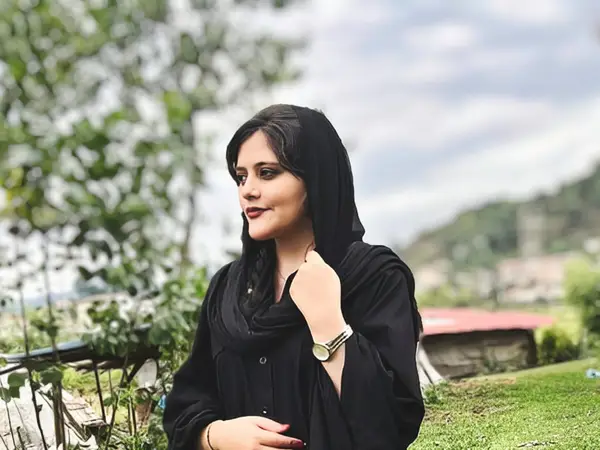A young woman who had received a severe head injury in the custody of Iran's hijab police, died on Friday, further enraging Iranians who flooded social media.
Social media posts with the hashtag ‘Mahsa Amini’ have continued to be retweeted and liked thousands of times since Wednesday when it was revealed that she had been taken to hospital from a detention center in northern Tehran only two hours after her arrest and was in a coma. Authorities deny any violence against Amini while she was in custody.
A photo of the 22-year-old Mahsa Amini on the hospital bed shows her unconscious with very clear signs of bleeding from her right ear. Several doctors including Mahdiar Saeedian, editor of a health magazine, have pointed out on social media that brain strokes do not cause otorrhagia (hemorrhage from ears) which proves that her coma was caused by trauma to the head.
The young girl – originally from Saqqez in Kurdistan province -- was arrested in her brother’s car on a visit to the capital to see their relatives by hijab enforcement officers. The morality or Islamic religious police told her brother she was being taken to the detention center for a brief admonitory session about the Islamic dress code, hijab, and would be released soon after.
Iran’s government which is now fully controlled by hardliners has adopted a harsher than usual approach amid economic crisis and hardship for tens of millions. Government and military officials have warned the population against disobeying hijab rules and hijab enforcement patrols have detained many women, sometimes violently, on the streets.
Hijab patrols have increased on the streets in recent months and videos of violent arrests of women and teenage girls as well as confrontations between people and hijab enforcers arevfrequently posted.
Many social media users have also pointed out that when George Floyd was killed because of police violence in the United States, in a televised speech Iran’s leader Ali Khamenei called it a “brutal” act that exposed “the true nature of the rulers of the United States.”
“The Islamic Republic never pays the cost of its brutality. Where are those [hardliners] now who lit black candles for George Floyd and made the hashtag ‘I can't breathe’ trending [in Persian social media],” one of the tweets retweeted hundreds of times asked.
Khamenei has always expressed support for strict hijab enforcement. In a speech in July, he alleged that Iranian women’s anti-hijab movement is nothing but a Western plot. The speech was made ten days after an anti-hijab protester identified as 28-year-old writer Sepideh Rashno was arrested in Tehran after an encounter with a hijab enforcer on a city bus.
Social media users have also highlighted the deaths in custody of other ordinary people and activists, including women's rights activist Haleh Sahabi in 2011, blogger Sattar Beheshti in 2012, Iranian-Canadian environmentalist Kavous Seyed-Emami in 2018, andZahra Bani-Yaghoub, a medical doctor who died in prison in 2007 after being arrested by the morality police. Iranian authorities attributed all these deaths in custody to strokes without taking any responsibility for them despite undeniable evidence of violence.
“Sattar Beheshti had a ‘stroke’. Haleh Sahabi had a ‘stroke’. Kavous Seyed-Emami had a ‘stroke’. Nobody gets killed by beating in the Islamic Republic,” another very popular tweet said.
Several Iranian celebrities including outspoken former national team soccer player Ali Karimiwho has nearly ten million followers on Instagram have posted about the young woman's tragic fate on social media. American actress and author Leah Remini’s tweet about the incident has also drawn much attention to Amini’s case and state violence against Iranian women for hijab.
